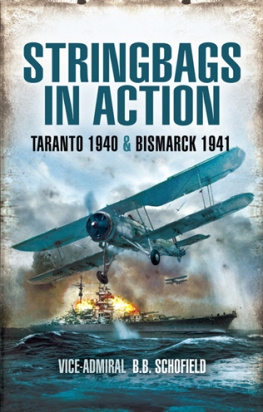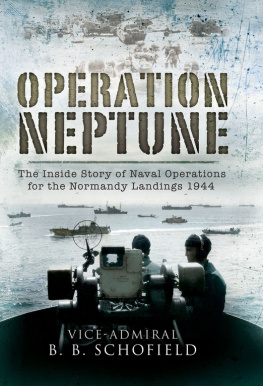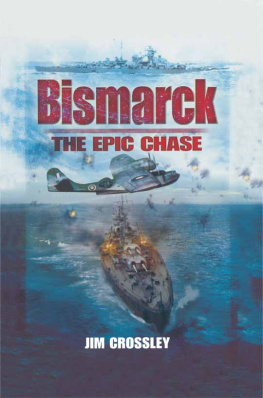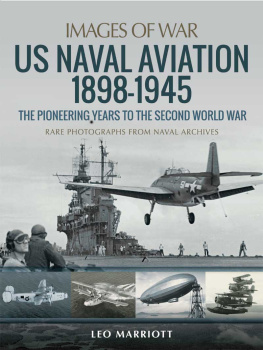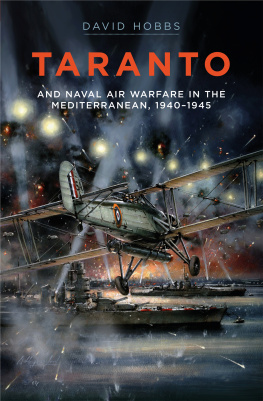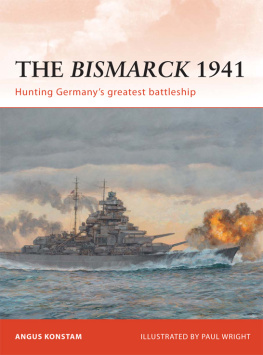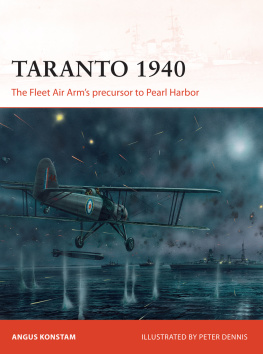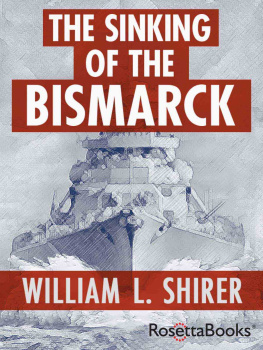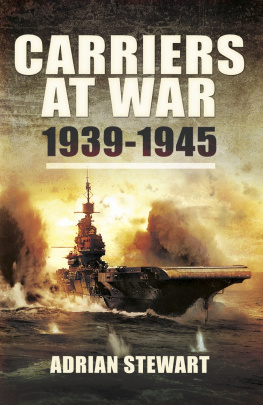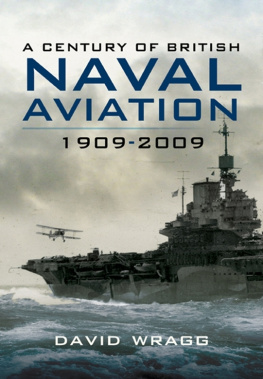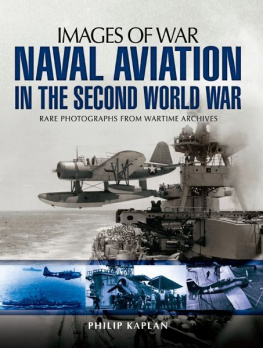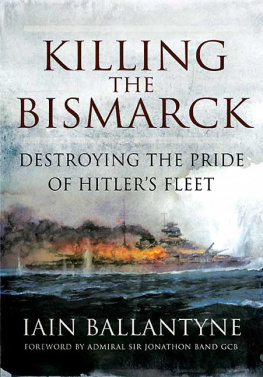
By the same author
The Royal Navy Today
The Russian Convoys
British Sea Power
The Rescue Ships (with L.F. Martyn)
The Loss of the Bismarck
The Arctic Convoys
Operation Neptune
The Story of HMS Dryad

The Attack on Taranto
First published in Great Britain in 1973
The Loss of the Bismarck
First published in Great Britain in 1972
Reprinted in this format in 2010
By Pen and Sword Maritime
an imprint of
Pen and Sword Books Ltd
47 Church Street
Barnsley
South Yorkshire S70 2AS
Copyright The Estate of Vice Admiral B.B. Schofield, CB, CBE, 2010
ISBN 978 1 84884 388 2
ISBN 978 1 84468 267 6 (ebook)
The right of Vice Admiral B.B. Schofield to be identified as the author of this work has been asserted in accordance with the Copyright, Designs and Patents Act 1988.
A CIP record for this book is available from the British Library
All rights reserved. No part of this book may be reproduced or transmitted in any form or by any means, electronic or mechanical including photocopying, recording or by any information storage and retrieval system, without permission from the Publisher in writing.
Printed and bound in England
by CPI
Typeset by Chic Media
Pen and Sword Books Ltd incorporates the imprints of
Pen and Sword Aviation, Pen and Sword Maritime, Pen and Sword Military,
Wharncliffe Local History, Pen and Sword Select,
Pen and Sword Military Classics and Leo Cooper.
For a complete list of Pen and Sword titles please contact
Pen and Sword Books Limited
47 Church Street, Barnsley, South Yorkshire, S70 2AS, England
E-mail: enquiries@pen-and-sword.co.uk
Website: www.pen-and-sword.co.uk
Contents
PART II
Appendices
PART II
Appendices
My Stringbag flies over the ocean,
My Stringbag flies over the sea.
If it werent for King Georges Swordfish,
Where the hell would the Royal Navy be?
The popular lyric sung by Fleet Air Arm pilots to the tune of My Bonnie Lies over the Ocean during the Second World War makes a valid point. Without the legendary Swordfish plane, the Royal Navy would not have retained its mastery of the seas. Threatened by the Italian Navy in the Mediterranean and German submarines in the Atlantic, if Britain was to prevail in the inevitable naval battles to come, it was essential to have the ability for aerial attack.
Stringbags in Action tells the story of two major events in 1940 and 1941 the attack on Taranto and the sinking of the Bismarck - in which the Swordfish played a significant role. With a cruising speed of less than 100 mph, the slow-moving bi-plane had been built in the 1930s by Fairey Aviation Company. Designed to spot the fall of a warships gunfire, with a torpedo strapped under the fuselage, the plane was effective both in naval reconnaissance and as an aerial torpedo bomber. Officially called the Fairey Torpedo-Spotter Reconnaissance, with space-saving folding wings, it was given the name Swordfish; the bracing wires between the wings, and its ability to carry an assortment of pieces of equipment - like a housewifes shopping bag - also meant that the Swordfish was affectionately called a Stringbag by the brave young men who flew in it. Against its deficiencies, it surpassed the speedier monoplanes by being easy to handle and was relatively resistant, both against attack and in seaborne sorties in adverse weather conditions. Although obsolescent when the war began, writes my father, B.B. Schofield, the Swordfish remained operational throughout the war and proved its value in anti-submarine warfare many times over.
After Italys entry into the war in June 1940, Swordfish planes, based in Malta, started to attack Italian shipping in the Mediterranean, sinking on average 50,000 tons of shipping per month. Then came the ambitious plan to attack the Italian fleet based in southern Italy in the harbour of Taranto. Twenty-one Swordfish planes were used on which, my father writes, the success or failure of the operation depended. The following year, the German battleship, Bismarck, embarked on her first and only mission, leaving the safe haven of the Baltic Sea with the heavy cruiser Prinz Eugen. With a speed surpassing any of the British battleships, the Bismarck posed the greatest threat yet to Britains merchant shipping. Once intelligence reports were received that she was heading for the Atlantic, the British Home Fleet seized the opportunity to deploy a large force, involving Royal Navy battleships, destroyers, cruisers and aircraft carriers, to attack her. After the disastrous sinking of HMS Hood, the pursuit of the Bismarck became an epic battle to find and destroy her, before she could reach safety in the French port of Brest. Yet again, the Stringbags were in action.
Victoria Schofield, 2010.
The Attack on Taranto
1940

I t is not really surprising that there was a great deal of opposition to the introduction of aircraft into the Royal Navy. The Service had only recently adjusted itself to the revolutionary change from sail to steam and, at first it appeared that here was yet another invention threatening to cause a new upheaval. So when, in March 1907, the Wright Brothers offered the Admiralty the opportunity of acquiring the patent rights of the flying machine in which, three years previously, they had made history by achieving the first sustained flight, it was politely declined. Almost alone amongst senior naval officers of that period, the First Sea Lord, Admiral Sir John (later Lord) Fisher realised the possibilities of this invention. A year later he sent an officer, Captain (later Admiral Sir) Reginald Bacon, to France to report on the first international air race which took place at Rheims. In that year Louis Bleriot flew across the Channel and Britains insular security was breached. Fisher could see, in the ability to fly, a means of obtaining intelligence of the disposition of an enemy fleet both in harbour and at sea and it was natural that, at first, the lighter-than-air ship appeared more suited to this role than the heavier-than-air craft. The German Navy was of the same opinion and gave Count Zeppelin every encouragement with the development of the famous rigid airships named after him.
The first British naval airship was the 512ft (155 m) long Mayfly. She took two years to build but she had a life of only four months, being caught by a gust of wind and destroyed as she emerged from her hangar on 29 September 1911. The disaster somewhat dampened the Navys enthusiasm for aviation and it was due to two members of the newly formed Royal Aero Club, Francis McLean and C.B. Cockburn, who offered to lend the Admiralty aircraft and teach selected officers to fly, that the spark was rekindled. In response to a call for volunteers over 200 names were sent in, but only four were chosen, subsequently increased to five, and all gained the Royal Aero Clubs Aviators certificate within six weeks of commencing training. Meanwhile another officer, Commander Schwann, who had been connected with the building of the ill-fated Mayfly, had bought an aircraft with private funds which he had fitted with floats and with which it was demonstrated that an airplane could take off and land on the water. The enthusiasm of these early aviators soon led to flights being made from special platforms erected on warships and also to the construction of seaplanes. The Admiralty, now impressed by all these activities, was moved to set out the duties which they considered naval aircraft should be capable of performing. These were:
Next page
